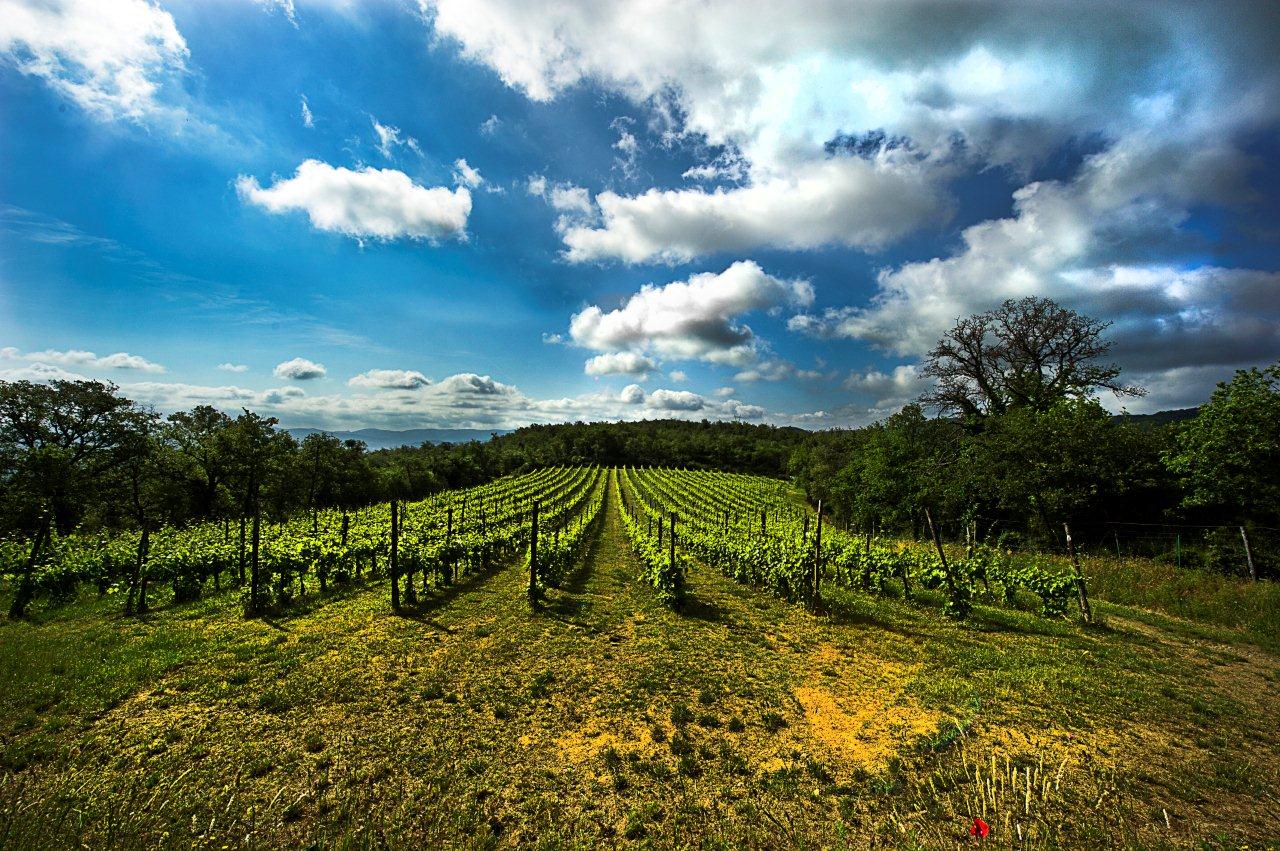
Petrolo
Torrione 2020
Toscana IGT
Torrione marks the beginning of the Petrolo’s quality revolution. It is considered to be the true identity of Petrolo, made with a blend of grapes from all of the estate’s vineyards. With a blend of Sangiovese, Merlot, and Cabernet Sauvignon, Torrione is also in keeping with Tuscan tradition of adding Bordeaux varieties to Sangiovese and instilling a sense of place in the French varieties, lending them a distinctly Tuscan character.
VINEYARD

At an altitude of 820 ft – 1640 ft above sea level, the soil is mostly loam, with variable rocky stratifications of schist, marl and sandstone. EU certified organic farming as of the 2016 vintage. Natural/sustainable farming since 2004. Dry farming, no tillage, total grassing with mulch management, no use of synthetic pesticides or fertilizers.
WINEMAKING

Manual harvest in crates. Grape selection & sorting table. Natural vinification with native yeasts in concrete vats. Soft and frequent manual pumping over. Skin maceration over 18 days. Aging: 15 months, part in French oak barriques, part in 40 Hl oak barrels and partly in concrete vats.
VINTAGE

After a fairly regular winter, the initially mild spring brought abundant rains in May and rather cold temperatures for the period. At the beginning of summer, with the heat wave in June, the development of the vines was realigned to its usual course. The consistent thunderstorms in July did not damage the vines and on the contrary the additional rain allowed a balanced growth of the bunches. The grapes in August benefited from a warm and bright period that guaranteed perfect ripeness and excellent health conditions.
Color
Red
Appellation
Toscana IGT
Farming
Organic
Alcohol
13.7%
Suggested Retail Price
$35.00
Reviews
"Cherries and chocolate"

Wine Enthusiast - June 27, 2023 "Savory aromas of balsamic vinegar and mushroom mingle with dark chocolate, black cherry and wild fennel on the nose, with tar and graphite emerging at last before the palate offers more cherries and chocolate against pliable tannins." D.C 6/23
"Raspberry fruit"

Wine Spectator - June 12, 2023 "This lithe red starts out with currant and raspberry fruit, shifting to a firm, compact finish marked by earth and underbrush. The middle shows an open-knit, succulent texture, and this ends with light astringency." B.S 7/23
Reviews
Trade Materials
Other Wines by this Producer

Bòggina B
Toscana IGT
Bòggina B is a little bit of Burgundy with a Tuscan twist. The wine is made with 100% Trebbiano Toscano. The clone of the Valdarno has been known for its quality since the 1300s, when it was regularly sent to the popes in Rome and the courts of Florence. Petrolo has been using Trebbiano grapes for its sweet vinsanto for decades, but owner Luca Sanjust decided that the time had come for a tribute to the great whites of Valdarno’s past. The wine is made under the guidance of one of Burgundy’s greats, Mounir Souma of Lucien Le Moine.

Bòggina A
Val d'Arno di Sopra
Every year, Petrolo selects a small lot of Bòggina, a wine made purely from their best Sangiovese grapes, to ferment in amphorae. The choice of amphorae has a historical dimension to get closer to Tuscany's cultural roots, as Terracotta in Tuscany has a history back to the early Etruscan times. The remains of amphorae and other Etruscan relics can be found throughout the Petrolo property, an area that has been settled for thousands of years.

Bòggina C
Val d'Arno di Sopra
Boggina is bottled from the best barrels of Sangiovese produced each year from the Boggina hill, planted in the 1950’s by Luca’s grandfather. Bòggina is the oldest vineyard on the Petrolo estate, and the source of Petrolo’s most prized Sangiovese vines.

Galatrona
Val d'Arno di Sopra
Galatrona is a cru made entirely from Merlot grapes coming exclusively from a single vineyard planted in the early ‘90s. Year after year, it is recognized critically (the “Le Pin of Tuscany” by Wine Spectator, for example) but, more importantly, understood as being a reflection of its site far more than its grape varietal.






